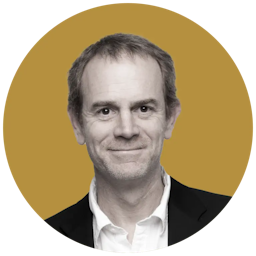Bingo: All Ears on the Fed as Central Bankers Gather for Annual Meeting in Wyoming
There is near universal expectation that the bank will raise interest rates again in September. The questions are by how much, and for how much longer will the Fed be tightening.

In what has become an annual ritual, followers of the Federal Reserve and other economics nerds are filling out their bingo cards in anticipation of Chairman Powell’s speech Friday at the central bank’s annual shindig in Wyoming.
Players get to claim a square every time the central banker says “data” or “core inflation” or “appropriately restrictive.” Other squares on this year’s cards might include “jobless claims,” “supply chains,” and “constraints.”
Two words that are on no one’s bingo card after last year’s speech, in which Mr. Powell downplayed the specter of inflation, are “temporary” or “transitory.”
Mr. Powell’s assertion last year that inflation, now at its highest rate in four decades and showing only slight signs of tapering, would subside quickly has proved to be one of his — and by extension, the bank’s — most inauspicious statements (which is saying something).
Since then, the central bank has raised interest rates at the fastest pace in decades in an effort to tamp down inflation. At its last meeting in July, the governors voted to raise rates by three-quarters of a point — the third hike so far this year. There is near universal expectation that the bank will raise interest rates again in September. The questions are by how much, and how much longer the Fed will continue to tighten.
“My view is that Jerome Powell is likely to be very clear that the Federal Reserve’s intention is to continue with its hawkish monetary policy stance until the Fed sees very clear signs that inflation is declining significantly,” an economist at the American Enterprise Institute, Desmond Lachman, told the Sun.
“Without showing his hand what the Fed will do at its next meeting, I expect that Mr. Powell will leave the door open to increase interest rates by 50 basis points at its next meeting rather than by the 75 basis point increases of the past two meetings,” Mr. Lachman said.
During a news conference after the July announcement, Mr. Powell said he would stop offering guidance regarding future moves because he wanted to wait out the “data” on measures of inflation and the unemployment rate before deciding whether to continue the aggressive increases.
That leaves investors and others hanging on every word the chairman says at places like Jackson Hole. They will be listening for any hint that the central bank is about to shift course as it attempts to maneuver the American economy in for a recession-defying soft landing. Hence the words such as “jobless claims” and “core inflation” on most bingo cards.
In some respects, the central bankers of the world who attend the annual parley hosted by the Kansas City Federal Reserve are in uncharted economic waters. Previous downturns such as the Great Recession of 2007-09 could be blamed on demand-side doldrums. The consumers who drive much of the world’s economy were tapped out and stopped spending.
The current Covid-era downturn is a different animal. The pressures on prices contributing to inflation these days are largely supply-driven. Consumer demand is still there, in part because of a healthy job market, but shocks to the supply of everything from semiconductors to oil to automobiles are pushing up prices in the face of that demand.
The theme of this year’s conference — “Reassessing Constraints on the Economy and Policy” — reflects that new reality. Previous central bankers could reasonably expect that interest rate increases would drive down demand enough to slow an economy and lessen the rate of inflation. Yet how does a central bank, via monetary policy, cope with shutdowns in China that make computer chips nearly impossible to come by or trucker shortages that make chicken wings wildly expensive?
The challenge facing Mr. Powell and the Fed now, according to a former treasury secretary, Larry Summers, is how to manipulate interest rates in such a way that brings down inflation without torpedoing the rest of the economy.
“The Fed doesn’t know where it is,” Mr. Summer said in an appearance on Bloomberg earlier this week. It “has a fundamental problem about which it is not yet willing to be realistic, and that is that it is exceedingly unlikely that inflation can be brought down to target levels without a substantial increase in unemployment.”
He added: “They want to be very concerned about unemployment and about inflation. And the reality is that it’s probably not so realistic to think that they’re going to get inflation all the way down without getting unemployment up. And they don’t want to acknowledge that.”
Mr. Lachman is also skeptical that Mr. Powell can pull it off.
“By continuing to aggressively raise interest rates at a time of incipient domestic economic weakness and of a brewing perfect economic storm abroad, the Fed would seem to be inviting a hard U.S. economic landing,” he said. “This is why one must hope that the Fed soon moves to a slower pace of interest rate increases and gives itself time to see how its interest rate increases to date will affect the economy.”

